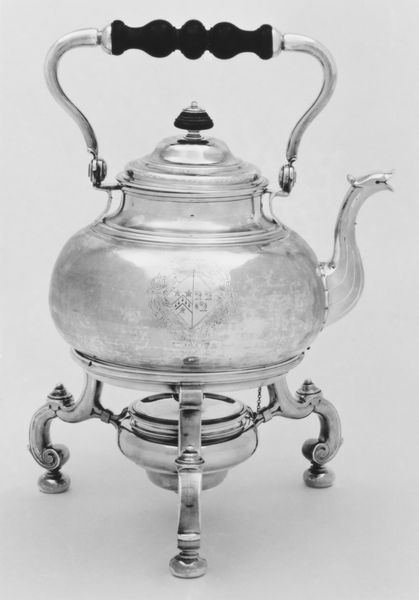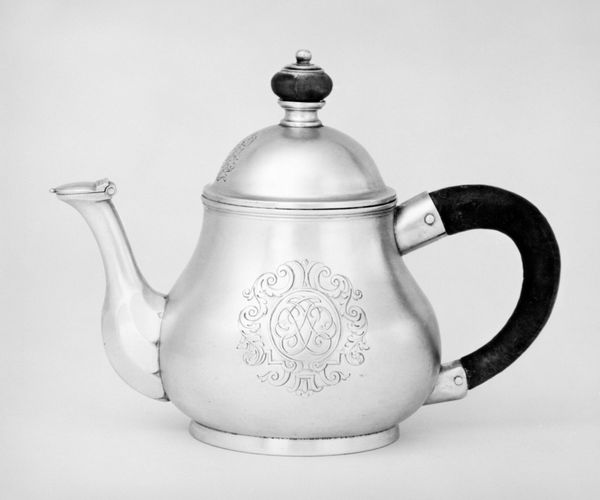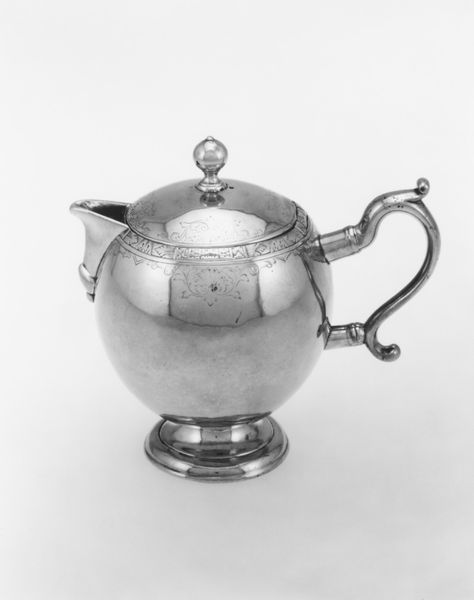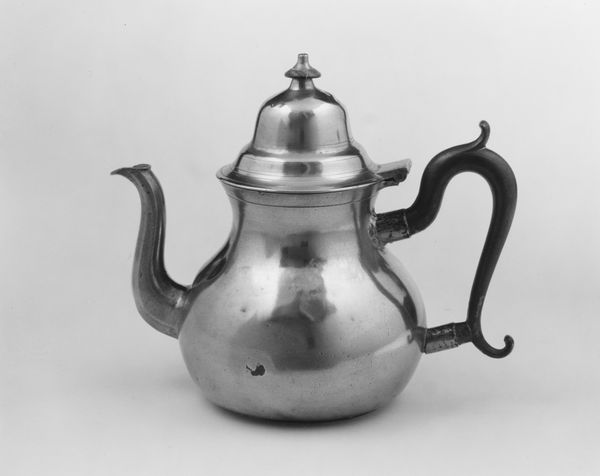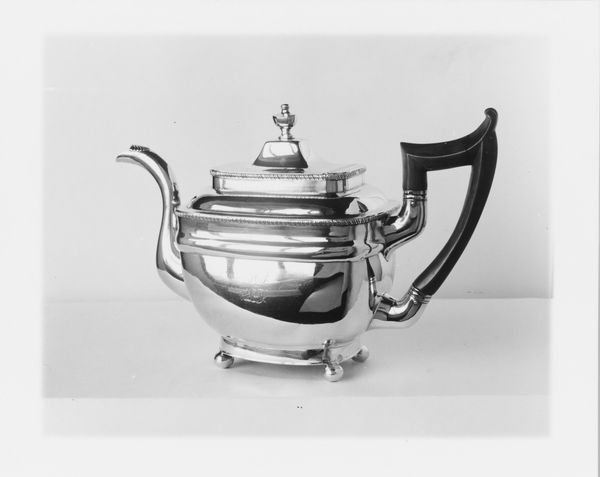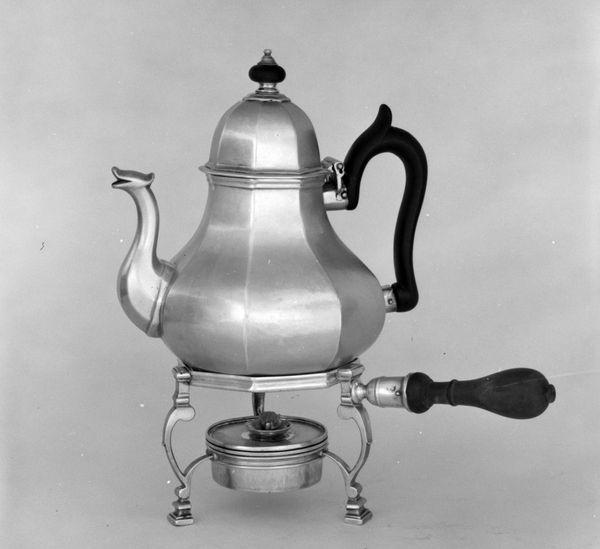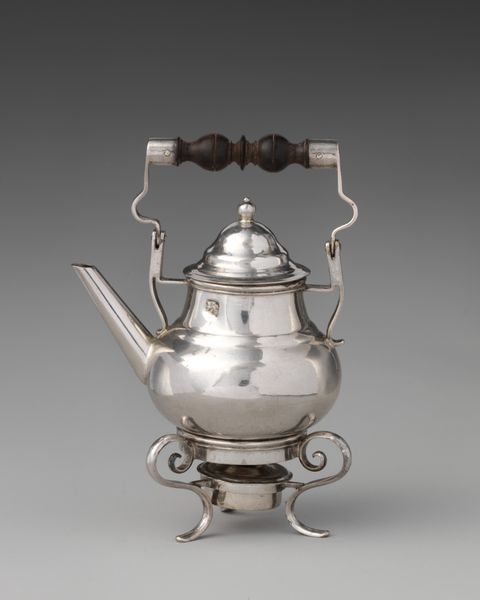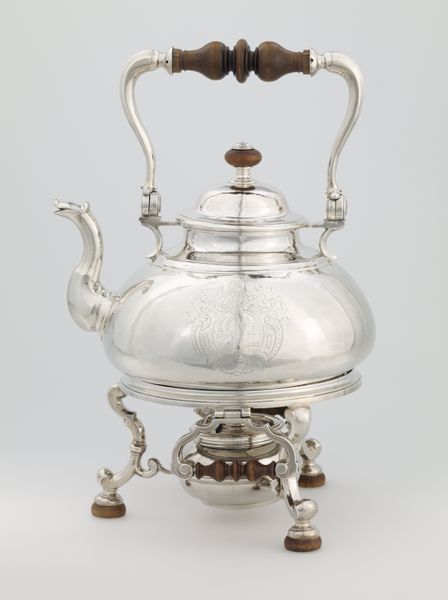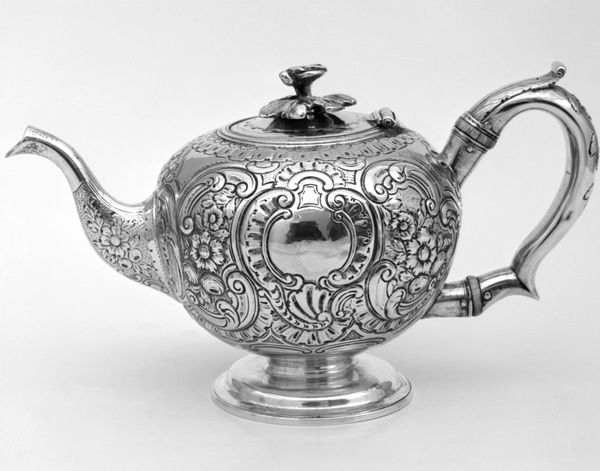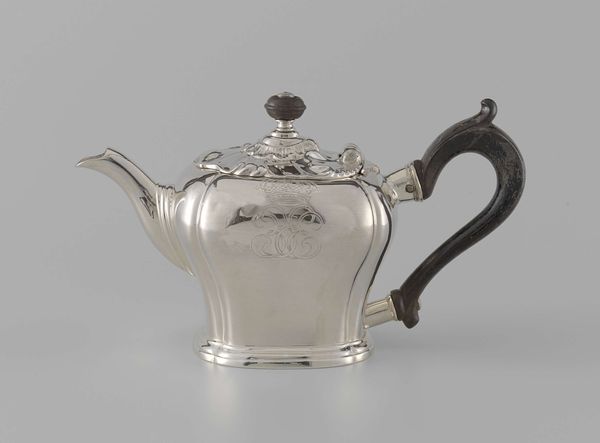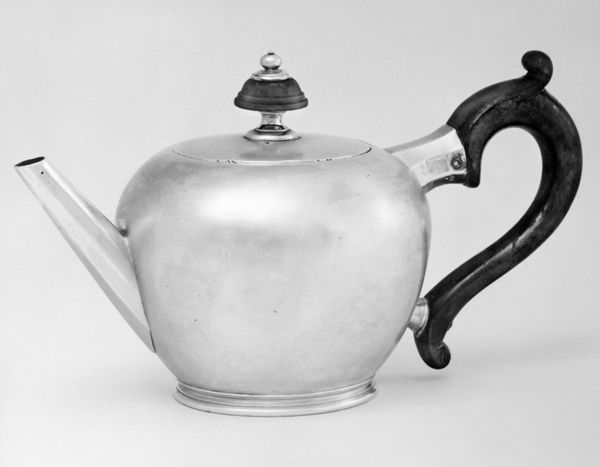
silver, metal, sculpture, wood
#
silver
#
baroque
#
metal
#
sculpture
#
wood
#
decorative-art
Dimensions: Height: 7 1/4 in. (18.4 cm)
Copyright: Public Domain
Curator: Well, doesn't that gleam? This silver teakettle and lamp stand, dating back to 1710-1711, is credited to William Lukin I. It resides here at the Metropolitan Museum. The baroque details are just whispering of another era. Editor: My first impression is one of exquisite restraint, almost somber in its elegance. It’s an everyday object, yes, but imbued with such considered craft—the heft of the wood handle balancing the reflective, cool silver. Curator: And let's consider that material—silver! Think about the mining, the refining, the silversmithing guilds—the whole socioeconomic structure distilled into this object meant for a humble cup of tea. Editor: Right, it begs the question, who exactly was drinking this tea, and under what circumstances? Luxury goods like these were often implicated in exploitative labor practices, of course. Though there’s also a palpable artistry to the silversmithing—that fluted spout, those delicate feet... Curator: Almost as if it’s elevated ritual. Beyond mere sustenance, this teapot and stand were, undeniably, meant to inspire more than just tea-induced energy. One can also sense something incredibly intimate in its making; those subtle hammer marks speak of a close relationship between the craftsman and metal, imbuing an item such as this, in my eyes, with personality. Editor: Personality acquired through the slow, careful labor. These objects weren't mass-produced; there was a different kind of investment on all fronts. Even its survival until the present becomes remarkable when considering that. Curator: Its endurance *is* beautiful, actually. Now, stepping back—how does the stand work? With this elegant stand supporting the teakettle? Is this piece an altar to steam itself? To warm conversation and thought, and what secrets are those elegant baroque curlicues attempting to conceal? I get lost in the story it wants to tell me. Editor: Perhaps less secrets and more declarations, a blatant display of wealth as part of elaborate rituals of class performance—though undeniably handsome. What I’m most intrigued by, really, is what future repurposing awaits. What innovative uses will subsequent hands unlock as they encounter this artifact in eras yet unborn? Curator: That, I daresay, is quite something to muse upon as we depart, don’t you think?
Comments
No comments
Be the first to comment and join the conversation on the ultimate creative platform.
